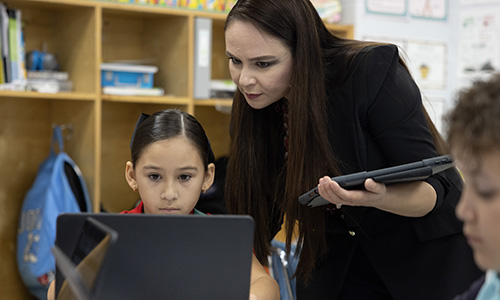Journal article
Measuring student reading comprehension performance: Considerations of accuracy, equity, and engagement by embedding comprehension items within reading passages
June 2022
Practical Assessment, Research, and Evaluation 27. https://doi.org/10.7275/ch8r-tx33

Abstract
Reading comprehension is measured differently between classroom and more formal approaches to assessment. Traditional reading comprehension assessments often prompt students to read a multi-paragraph passage prior to displaying a set of questions that are related to the passage; however, this approach is not utilized during classroom practices. The study suggests that assessments may inadvertently measure extraneous constructs (e.g., working memory, attention, language, reading ability) by prompting students to answer items at the conclusion of the reading passage. The current study evaluates the effect of asking items throughout the passage (i.e., embedding items) to achieve a more precise measure of reading comprehension by removing barriers for students to demonstrate their understanding. Results showed a significant impact of embedding comprehension items within reading passages on the measurement of student achievement in comparison to answering items at the end of the passage. This may be a more valid approach to measurement of reading comprehension resulting in improved student reading comprehension scores. This approach also has the potential to become a more equitable measurement of reading comprehension by removing barriers to measurement, particularly for marginalized groups (e.g., students with disabilities, memory-load difficulties, English language learners, test anxiety).
See MoreThis article was published outside of NWEA. The full text can be found at the link above.








